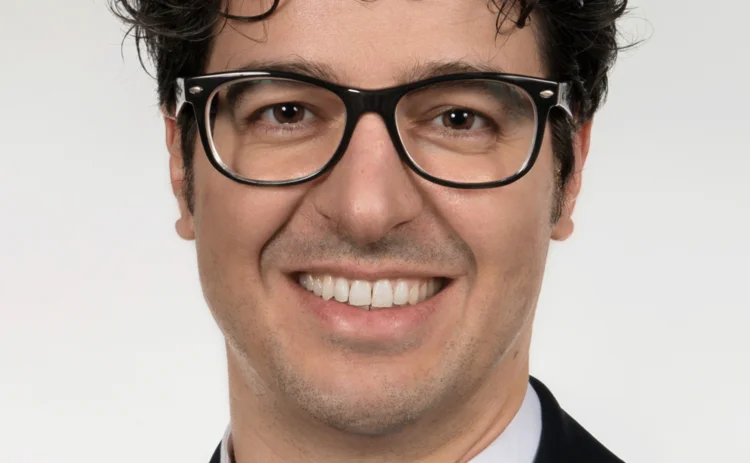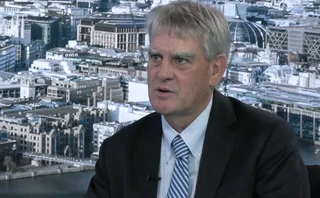
Precious metals house of the year: Credit Suisse
Energy Risk Awards 2021: Precious metals team's outstanding 2020 underpinned by bank's consolidation move

The precious metals business at Credit Suisse has undergone a transformation in recent years, leading to an outstanding performance in 2020. For example, over the course of the year, the bank almost doubled its market share of spot precious metals.
Underpinning the team’s success was the bank’s decision to consolidate all its trading businesses into one unit, Global Trading Solutions (GTS), which launched in 2019. One particular benefit of this for the precious metals team has been greater access to the bank’s private banking and wealth management franchises, says Francesco Schiavo, global head of precious metals (PM) options and foreign exchange/PM eCommerce options.
“The GTS consolidation provided a unified foundation, establishing a central unit that is definitely worth more than the sum of its parts,” says Schiavo. “For the precious metals desk, this was a key step in enabling us to gather momentum last year.”
Indeed, the consolidation enabled the precious metals team to boost its offering to service more clients, expand its ability to warehouse risk and implement key technology developments, just in time for the extreme bouts of volatility seen across commodity markets in 2020.
John Estrada, head of eMacro at Credit Suisse believes the creation of GTS has been a key enabler of innovative problem-solving over the past year, allowing the bank to really focus on understanding clients’ problems, rather than merely focusing on the “story” and the historic movements of gold, for example.
“Our focus is client service, and that gives us an edge,” he says.
Indeed, under this new internal structure, the precious metals team has been able to progressively warehouse more risk for clients since January 2020, just in time for pandemic-related market volatility.
“Most of our corporate clients want to hedge price risk,” says Aurélien Gleyze, co-head of eMacro trading at Credit Suisse.
Credit Suisse can now transact in larger volumes with these clients. Rather than using the futures market, the team internalises the flow, passing large chunks of these transactions to other parts of the business by matching appetite among private banking and wealth management clients. The team started doing this in January 2020, and, by May, it was internalising a minimum of 90% of the ticket across gold, silver, platinum and palladium.
In addition to reducing the impact of larger transactions on the market, Credit Suisse can also now offer tighter spreads because these large transactions are not driving down prices in the various markets for these metals. “The market benefits, too, because this reduces swings in volatility,” adds Gleyze.
Matching the appetites of different client types from various parts of the bank requires significant portfolio management skills, Schiavo says: “Hedge funds tend to generate very concentrated risk, versus private banking clients for whom risk will generally be more widely distributed, for example.”
To manage this process, the precious metals desk overhauled its risk framework. Schiavo says this has involved strict quantitative limits and controls and greater use of scenario-based measures with clients such as institutional investors. “This enabled us to internalise more risk, and we have also used more active inventory management to support this more varied portfolio,” he explains.
Technology provides another edge over the competition, says Estrada, and is an area in which the team aims to continue to innovate. To date, it has been using machine learning (ML) to tighten its pricing model. The bank was already employing this approach in its FX franchise, Gleyze explains: “Instead of comparing two inputs at a time, like a person would do, ML allows us to analyse more than 100 inputs, including correlated instruments. We analyse the price action for indicators of momentum, mean reversion, market activity, and combine all of that to forecast where prices will be.”
Gleyze believes such solutions show Credit Suisse’s efforts to solve clients’ problems, rather than simply “trying to help them navigate broken markets”.
“We are focused on delivering a consistent offering to all clients, in all market conditions,” adds Schiavo. “We were in the market in 2020, offering liquidity and expanding while other participants were retreating, and this has made a difference to our presence in sectors such as the institutional space. The challenging market conditions gave us the opportunity to step up.”
Only users who have a paid subscription or are part of a corporate subscription are able to print or copy content.
To access these options, along with all other subscription benefits, please contact info@risk.net or view our subscription options here: http://subscriptions.risk.net/subscribe
You are currently unable to print this content. Please contact info@risk.net to find out more.
You are currently unable to copy this content. Please contact info@risk.net to find out more.
Copyright Infopro Digital Limited. All rights reserved.
As outlined in our terms and conditions, https://www.infopro-digital.com/terms-and-conditions/subscriptions/ (point 2.4), printing is limited to a single copy.
If you would like to purchase additional rights please email info@risk.net
Copyright Infopro Digital Limited. All rights reserved.
You may share this content using our article tools. As outlined in our terms and conditions, https://www.infopro-digital.com/terms-and-conditions/subscriptions/ (clause 2.4), an Authorised User may only make one copy of the materials for their own personal use. You must also comply with the restrictions in clause 2.5.
If you would like to purchase additional rights please email info@risk.net
More on Awards
Collateral management and optimisation product of the year: CloudMargin
Delivering the modern blueprint for enterprise collateral resilience
Flow market-maker of the year: Citadel Securities
Risk Awards 2026: No financing; no long-dated swaps? “No distractions,” says Esposito
Pricing and analytics: fixed income – Quantifi
Quantifi delivers high-performance, transparent and adaptable pricing and risk analytics for fixed income and credit markets
Derivatives house of the year: Citi
Risk Awards 2026: Rev up, RWAs down, as US bank gets back on track (with added XiNG and XiP)
Technology vendor of the year: SS&C Algorithmics
Risk Awards 2026: From cloud, to chips, to maths tricks – vendor getting more out of existing tech
SS&C Algorithmics: winner’s interview with Curt Burmeister
SS&C Algorithmics wins three categories in this year’s Markets Technology Awards in addition to Technology vendor of the year at the Risk Awards
Best vendor for system support and implementation: Murex
Murex wins Best vendor for system support and implementation at the Markets Technology Awards 2026
Pricing and analytics: cross-asset and structured – Murex
Murex wins Pricing and analytics: cross-asset and structured at the Markets Technology Awards 2026 thanks to its MX.3 platform







